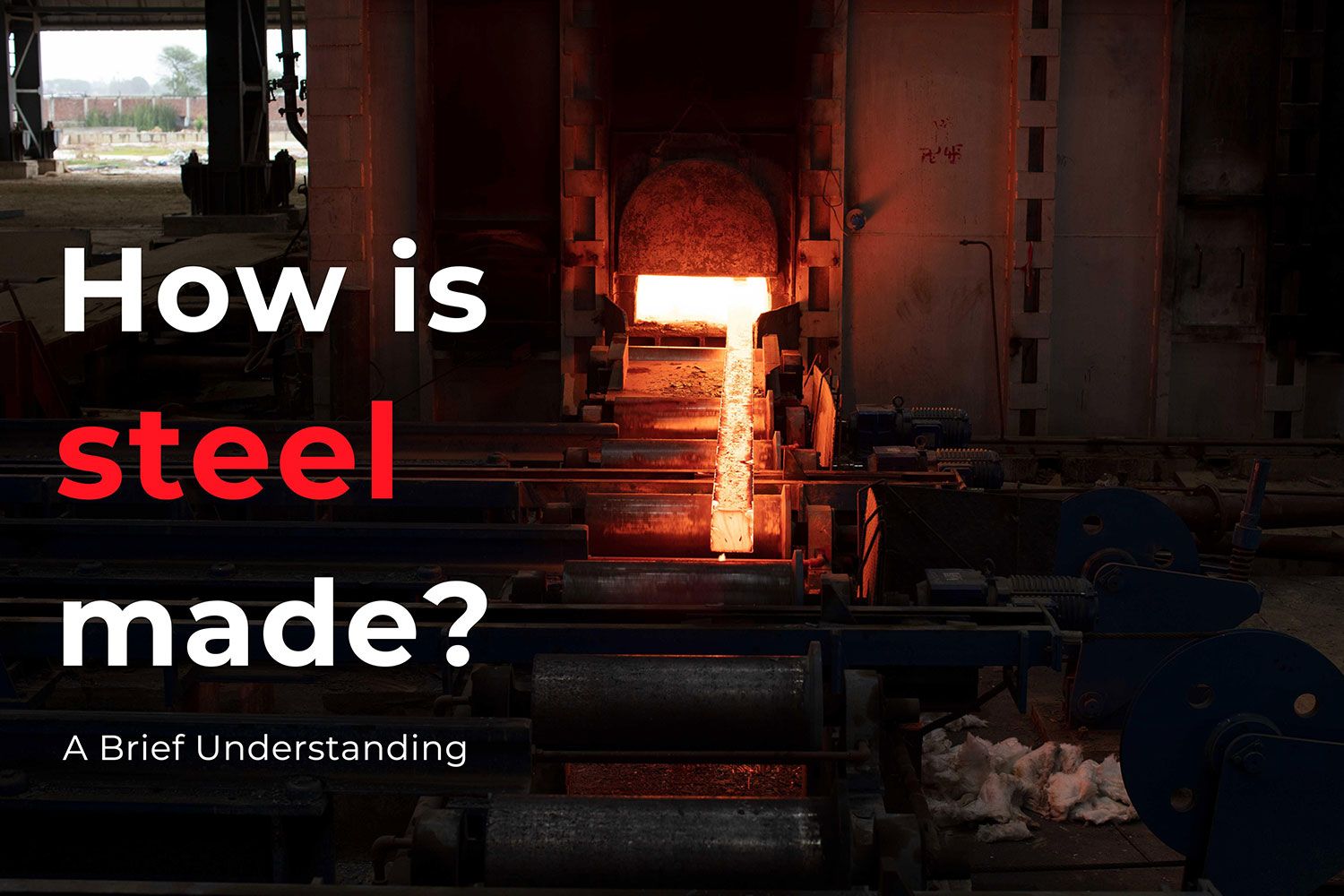
How Steel is Made ? - A Brief Understanding
Steel can be recycled indefinitely and is a low-energy material to make. Steel industry initiatives have reduced energy use and carbon dioxide emissions by more than half since the 1960s. As a result, steel is very ecologically friendly and long-lasting. Steel-based products include railways, oil and gas pipelines, skyscrapers, elevators, subways, bridges, autos, ships, knives and forks, razors, and surgical tools, to name a few examples.
Iron and carbon are the main constituents of steel. Silicon, phosphorus, sulfur, and oxygen are all possible minor constituents. Steel's carbon content ranges from 0.08% to 1.5%. This makes it more durable than wrought iron, but not as brittle as cast iron, making it a good compromise. Hardness, pliability, and tensile strength are all found in perfect harmony in steel. Compared to softer wrought iron, it's more durable and keeps an edge better. This material has a higher tensile strength than cast iron but is less flexible.
How is Steel Made?Furnaces eliminate impurities and add carbon when iron ore melts throughout the manufacturing process. Steel is now mostly produced by one of two methods:
- Blast Furnace
- Electric Arc Furnace (EAF)
Impurities and carbon are removed from iron and steel when it melts in furnaces throughout the production process. In recent years, the majority of steel production has been done by one of two methods:
Blast FurnaceThe contemporary blast furnace consists of a steel cylinder encased in a brick lining. There is a steady flow of iron ore, coke, and limestone into the furnace, and as they descend, they get hotter and hotter. Oxygen is liberated from the iron ore in the upper portion of the furnace by the coke-burning gas. Coke and ore impurities react with limestone and generate a slag in the lower section of the furnace. The furnace's bottom reaches temperatures of more than 3000 degrees Fahrenheit. A slag notch in the furnace drains the molten slag that has risen to the top of the molten steel. A tap hole within the hearth of the furnace allows the molten steel to be poured out.
Electric Arc Furnace (EAF)or the most part, EAFs are used to generate high-quality alloyed steel. Non-alloyed steel may also be made using EAFs. Unlike furnaces, EAFs do not employ hot metal. Scrap steel from repurposed items is what they're using. An overhead crane drops the steel scrap into the EAF.
As soon as the furnace reaches its maximum capacity, the lid is pulled shut, encasing the furnace's top. The electrodes are dropped into the furnace via the lid. The scrap is melted by a high electric current flowing through the electrodes. The chemical composition may be formed by melting waste metal and then adding additional metals, known as Ferro-alloys. To remove impurities from the steel, oxygen is blasted into the furnace. Slag is formed by combining lime and fluorspar with the impurities. To remove the molten slag, just tilt the furnace and let it drip away. There are a wide variety of high-quality steel alloys that may be produced in EAFs by mixing other metals. Stainless steel is by far the most often utilized of these alloys because of its corrosion-resistant qualities. Steels used during engineering, aerospace, and armor plating are also manufactured in EAFs.
Both the steel industry and steel as a product play an important role in driving the sustainability that society expects. Ambe Steels Pvt. Ltd. produces high-quality steel products like TMT Rebars, Gabion Box, GI Wires, and Torkari Wires for various construction purposes. Ambe Steels, being the best steel manufacturing company in Nepal, are committed to providing our customers with the highest quality products and services in the industry. We are devoted to providing consistent quality, regularity in supply, and quantity in manufacturing. To get daily updates on steel prices of Nepal, please visit https://ambegroup.com/ambe-steels/ambe-steels-price-in-nepal
